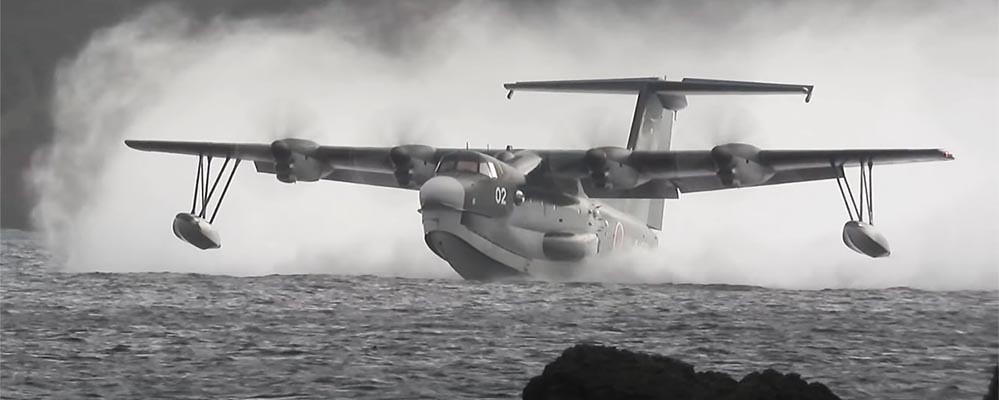The spectacular take-off at sea of a four-engine ShinMaywa US-2 seaplane
Japan is an island country. Its territory is made up of thousands of islands (more than 14,000 according to a recent count), and that presents a challenge for its naval force.
The Japan Maritime Self-Defense Force does not have the enormous size of the former Imperial Japanese Navy, but it does have some very remarkable resources and a very outstanding air-naval force. Among its dozens of fixed-wing aircraft are eight ShinMaywa US-2 four-engine flying boats, purchased to replace the aging fleet of Shin Meiwa US-1A flying boats.

The main mission of these planes is search and rescue, but they are also used for transportation. ShinMaywa is also planning to build a civilian version for firefighting. The great advantage of these planes is that they do not need landing strips on the mainland, since they can land and take off at sea, an ideal feature for a country like Japan.

One of the bases from which the US-2s operate is the Chichi Jima Naval Base, in the Ogasawara Islands, in southwestern Japan. This base, like the Military Aerodrome of the Spanish Air Force in Pollensa (Palma de Mallorca) is prepared to house seaplanes, with a small runway and a ramp for US-2s to access the sea. strong> In this video posted by Keroza Emon you can see the complete takeoff sequence, from when the plane leaves the platform of the Chichi Jima Naval Base until it rises from the waves:
You can see below some captures of the video. We start with the ShinMaywa US-2 on the seaplane platform of the Chichi Jima Naval Base. The height of the fuselage is striking.

The seaplane already in the water. Once floating, the ShinMaywa US-2 folds its landing gear. The front wheels are housed inside the fuselage. The rear wheels remain housed in two separate lateral eggs.

A side view of the ShinMaywa US-2 before takeoff. According to ShinMaywa, this seaplane can land in waves of up to 3 meters and only needs 280 meters to take off.

The ShinMaywa US-2 at the time of takeoff. The amount of water the plane moves is impressive, both with its fuselage and with its turboprop engines.

Moments after takeoff, the ShinMaywa US-2 continues to spew water, mainly due to its landing gear housings, but also to the water that adheres to the fuselage.

|
Don't miss the news and content that interest you. Receive the free daily newsletter in your email: |
- Most read
- The 'hole' without civil flights around Paris during the opening of the Olympic Games
- Stunning footage of the F-15QA Ababil in flight recorded from its cockpit
- The firearms used by the Pontifical Swiss Guard, the smallest army in the world
- The most distant deployment of the Spanish Air Force in Australia and New Zealand
- Eurofighter vs F-35: the opinions of professional pilots on these advanced fighters
- The first photo of an F-16 fighter with Ukrainian insignia and the details it has revealed
- This is the driver station of an M1 Abrams tank and the impressive start of its engine

 ES
ES







Opina sobre esta entrada: